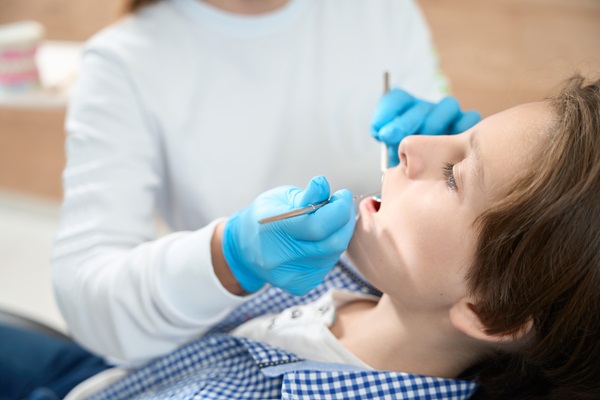Can Children Get Gum Disease?

As parents, we want to take every precaution to prioritise our children’s health and well-being, including their dental health. Brushing, flossing, and dental checkups become ingrained in our routines from a young age. Yet, one question may not cross our minds often: can children get gum disease? Though commonly associated with adults, children are also prone to this condition.
In this article, we will address the question, “Can a child get gum disease?” We’ll dive into the signs and symptoms parents should be aware of and explore the available treatment options for keeping your child’s smile healthy and happy.
Understanding Gum Disease in Children
Gum disease, or periodontal disease, is an infection targeting the gums and bones supporting the teeth. The primary instigator is plaque, a sticky film of bacteria that forms on teeth. If plaque isn’t brushed or flossed away, it hardens into tartar (calculus), setting the stage for bacterial growth and gum irritation.
The answer to the question is yes, children can get gum disease. The most common form is gingivitis, the earliest and mildest stage. Thankfully, proper dental care can quickly reverse gingivitis. Check the signs and symptoms first before this progresses.
Signs and Symptoms of Gum Disease in Children
Children might not always articulate discomfort effectively, so it’s crucial for parents to recognise early signs and symptoms of gum disease:
- Red, swollen, or puffy gums: Healthy gums should be pink and firm. Redness and puffiness suggest inflammation.
- Bleeding gums: Bleeding during brushing or flossing can signal gingivitis.
- Receding gums: When gums pull away from teeth, they expose the roots, making them prone to decay.
- Bad breath: Persistent bad breath, known as halitosis, may indicate gum disease.
- Loose teeth: Severe cases can weaken the bone supporting the teeth, resulting in prematurely loose teeth.
Apart from these visible symptoms, your child may experience discomfort while chewing or a noticeable change in their chewing habits. Also, pay attention if your child starts avoiding certain foods, such as hot or cold foods, as this could be due to gum sensitivity.
Risk Factors for Gum Disease in Children
Plaque buildup is the leading cause of gum disease in children, but other factors can elevate the risk:
- Poor oral hygiene: Brushing twice a day and flossing daily help remove plaque. Neglecting these habits allows plaque to build up.
- Sugary diet: Children often love sweets, but a high-sugar diet feeds plaque-causing bacteria.
- Mouth breathing: Chronic mouth breathing can dry gums, making them vulnerable to infection.
- Medical conditions: Certain illnesses, such as diabetes, weaken the immune system and raise the risk of gum disease.
- Medications: Drugs causing dry mouth, like antihistamines, can increase the risk of gum issues.
- Genetics: Certain genes may predispose a child to gum disease, increasing susceptibility.
Another factor to consider is that children with misaligned teeth or orthodontic appliances may face challenges with proper brushing and flossing, making it easier for plaque to accumulate.
Treating Gum Disease in Children
If your child exhibits signs and symptoms, it’s time to take action. The positive news is that gum disease in children is highly treatable, especially if detected early. Treatment often involves:
- Improving oral hygiene: Teach proper brushing and flossing techniques to ensure well-maintained teeth.
- Professional dental cleaning: Regular dental cleanings remove plaque and tartar from hard-to-reach areas.
- Dietary changes: Limiting sugary snacks and drinks helps control plaque growth.
Regular follow-ups with your dentist are essential to monitor your child’s progress and adjust treatment plans if necessary.
Preventing Gum Disease in Children
Prevention is better than cure. Here are some tips to help prevent gum disease in your child:
- Instil good oral hygiene habits early: Begin brushing your child’s teeth as soon as they appear and supervise brushing until they can do it independently (around age 6 or 7). Flossing should begin when children have teeth that touch (around age 8).
- Schedule regular dental checkups: Aim for dental checkups and cleanings every six months.
- Promote a healthy diet: Encourage a diet rich in fruits, vegetables, and whole grains, and limit sugary foods and drinks.
- Address chronic mouth breathing: Consult your pediatrician if you suspect your child is a chronic mouth breather.
Another key aspect of prevention is educating your child about the importance of oral hygiene in a way they can understand. Teach them how to brush and floss effectively, and make it a fun activity they can look forward to. Use kid-friendly toothbrushes and toothpaste flavours to encourage regular brushing.
Finally, be a good role model by maintaining your own oral hygiene routine and attending regular dental checkups. By taking these preventive measures and staying vigilant about your child’s oral health, you can help them maintain healthy gums and a radiant smile for years to come.
Fight Gum Diseases in Children with Whitehorse Dental
Brushing and flossing twice a day will not make it to the cut. To make sure that gum disease in your child is prevented, have the experts intervene while they’re still young. Get those little pearly whites maintained by the professionals at Whitehorse Dental. With years of experience and the latest equipment and strategies, regular dental check-ups can feel like a holiday in their clinic!
Book your appointment online or call us at +61 3 4054 3454 and let your child experience healthier teeth and a happier smile!

